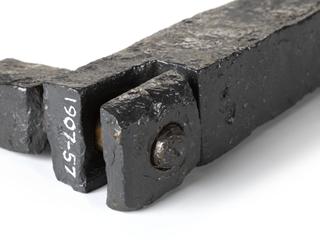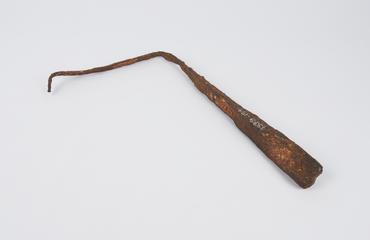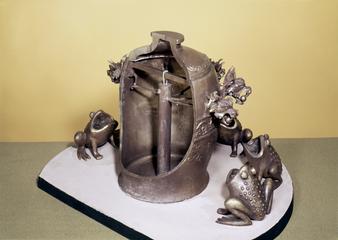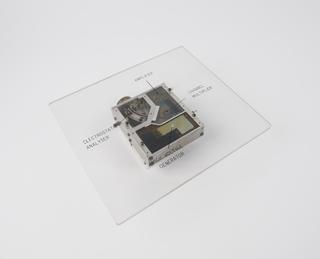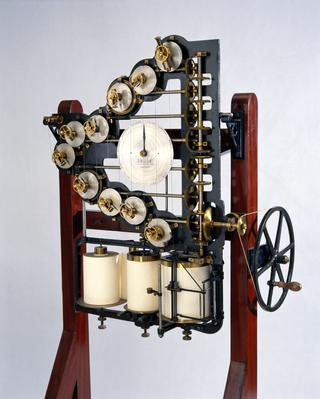
Recording drum from Golitsyn seismograph
- Made:
- 1937

Recording drum, made by staff at Kew Observatory, Richmond, London, 1937. This drum is part of the three-component seismograph designed by Russian seismologist Boris Golitsyn (Galitzin), but is a later modification to the original instrument. The drum enabled all three components of earth motion to be recorded on a single sheet of paper, and replaced the three separate drums original to the instrument.
Seismographs designed by Boris Golitsyn were widely adopted in Russia and European observatories in the early decades of the twentieth century to detect the faint waves from distant earthquakes. Unlike other fully mechanical seismographs at the time, the seismograph registers earth motion electromagnetically. The boom of each of the three pendulum units carries an induction coil at its end, which is located between the poles of a pair of magnets. Movement of the boom generates induction currents proportional to the displacement velocity. The currents are fed through galvanometers whose mirrors reflect light beams onto a photographic chart.
